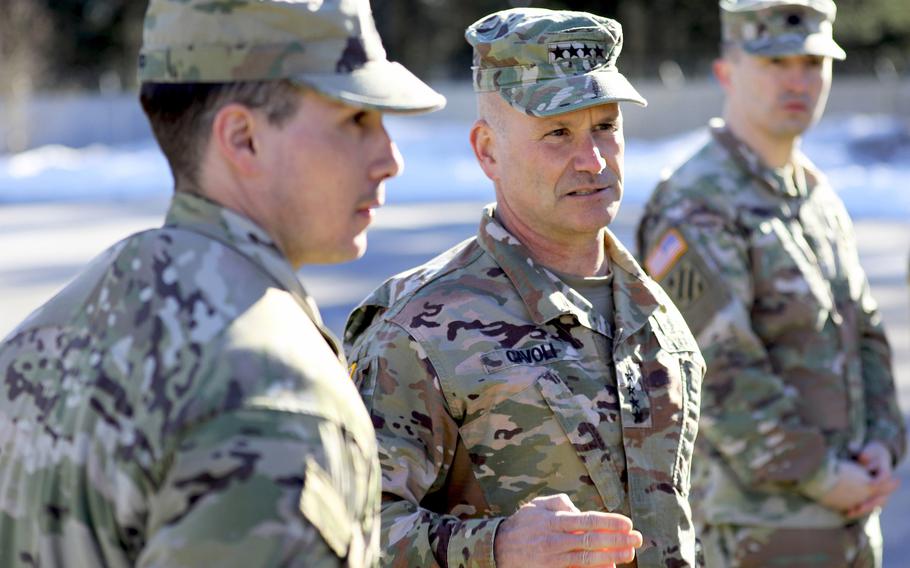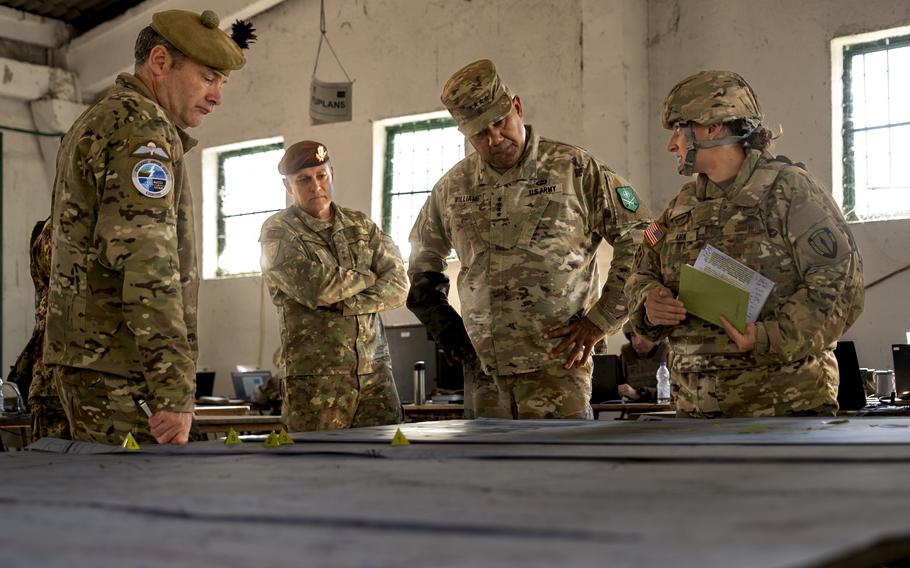
U.S. Army Gen. Christopher Cavoli talks to troops in March 2022, in Adazi, Latvia. Cavoli, NATO’s supreme allied commander and head of U.S. European Command, announced recently that NATO’s military headquarters will unveil a series of upgrades that will speed up how troops are mobilized in a crisis. (Ryan Gay/U.S. Army National Guard)
STUTTGART, Germany — NATO’s military headquarters is poised to unveil upgrades that will hasten troop mobilization in a crisis and improve operations at the front lines, according to the top U.S. military commander in Europe.
The changes fit into a broader transformation underway at Supreme Headquarters Allied Powers Europe in Mons, Belgium, under U.S. Army Gen. Christopher Cavoli, NATO’s supreme allied commander.
Cavoli, who also serves as head of the Stuttgart-based U.S. European Command, outlined some of those changes last week after a meeting of NATO defense chiefs.
“We have completely reorganized my headquarters at SHAPE,” he told reporters Thursday. “It is now organized in a warfighting fashion” for defending Europe.
For years, NATO was focused on out-of-area operations, namely in Afghanistan. But Russia’s invasions of Ukraine in 2014 and 2022 have refocused the alliance on territorial defense.
For both SHAPE and EUCOM, that has involved the transformation of their respective headquarters.

U.S. Army Maj. Aimee Kirk, with NATO’s Allied Rapid Reaction Corps, briefs Gen. Darryl A. Williams, Allied Land Command and U.S. Army Europe and Africa commanding general, during exercise Steadfast Jupiter 2023 in Romania. (Kyle Larsen/U.S. Army)
At the former, headquarters can now command in a manner that incorporates an array of subordinate headquarters from across the alliance, Cavoli said.
The reorganization was put to the test last year with a complex drill, Steadfast Jupiter, that rehearsed how the updated staff structure would exercise command and control for large-scale territorial defense.
“This hasn’t been done in a very, very long time,” Cavoli said. “It’s very intensive to do that.”
Cavoli also said his headquarters is on the verge of announcing other updated NATO command and control arrangements to carry out new regional defense plans.
The result will detail the tasks and geography for which subordinate headquarters are responsible, he said.
The new defense plans, approved by allies at a NATO summit in July, aim for the kind of operational detail that was typical during the Cold War, when American troops positioned in Germany knew what territory they would be defending if war broke out.
Granular information of that sort became unnecessary in the aftermath of the Cold War as concerns about Russian belligerence faded.
Meanwhile, Cavoli said, allies also will soon approve a new alert system that will streamline the approval process for moving forces in urgent situations.
Cavoli’s headquarters said the major problem allies face is “strategic defense is time and space.”
The alert system will give NATO “a force that represents the combined collective will” of member countries before a crisis, SHAPE said in a Wednesday statement. the statement.